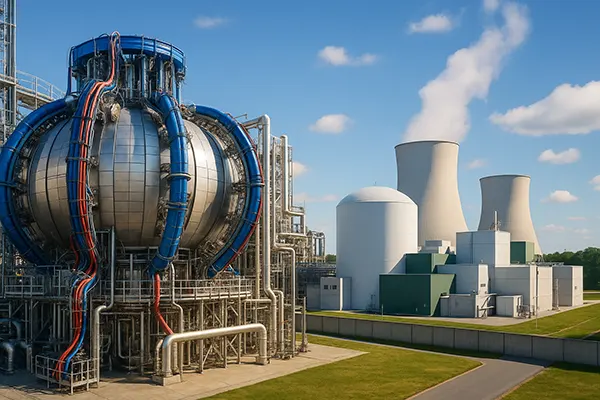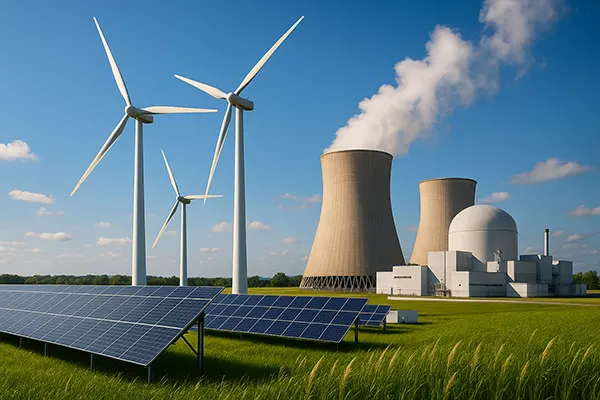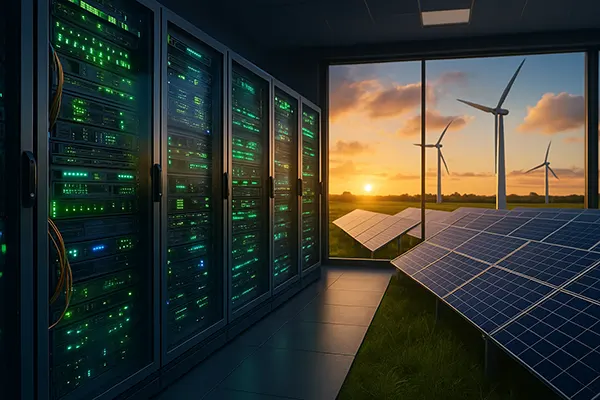New Energy: Fusion Reactors and Compact SMR Stations

The energy sector in 2025 is undergoing a transformation driven by two groundbreaking technologies: nuclear fusion reactors and small modular reactors (SMRs). Both are viewed as crucial innovations to meet the world’s growing demand for clean, safe and reliable energy. Fusion promises to replicate the processes powering the stars, while SMRs aim to deliver nuclear energy in a more flexible and accessible form. Together, they represent a future where low-carbon energy can be scaled globally.
Fusion Reactors: Progress Towards Star Power
Fusion energy has long been considered the “holy grail” of power generation. Unlike fission, fusion produces energy by merging light atomic nuclei, typically isotopes of hydrogen, under extreme heat and pressure. The key advantage is the absence of long-lived radioactive waste and the virtually unlimited supply of fuel, derived from water and lithium.
By 2025, projects such as ITER in France and private initiatives like Commonwealth Fusion Systems and Tokamak Energy in the UK have made significant advances. Superconducting magnets and improved plasma control methods are bringing commercial fusion closer to reality, with projections suggesting demonstration plants could be operational in the 2030s.
The investment landscape has also shifted. Governments and private investors alike are pouring billions into fusion start-ups, recognising its potential to deliver safe, abundant, and carbon-free power. For countries seeking to meet net-zero commitments, fusion is now more than a theoretical concept – it is a tangible part of long-term strategies.
Challenges in Fusion Development
Despite optimism, fusion still faces major hurdles. Achieving sustained net energy gain – where the energy output exceeds the input – remains one of the most difficult engineering feats ever attempted. The delicate balance of plasma confinement, stability and efficiency requires ongoing innovation.
Another challenge is cost. Current experimental projects are enormously expensive, and even with private-sector investment, building commercially viable fusion plants will require substantial infrastructure and regulatory frameworks. Ensuring international cooperation is also critical, as breakthroughs often depend on cross-border scientific collaboration.
Nevertheless, the progress achieved by 2025 shows a trajectory where fusion is moving from science fiction to science fact. While large-scale deployment may still be decades away, the foundations for commercialisation are steadily being laid.
SMRs: The Next Generation of Nuclear Fission
Small Modular Reactors, or SMRs, represent a new era of nuclear fission technology. Unlike traditional reactors, SMRs are compact, factory-built, and scalable. They can be deployed in remote regions, integrated with renewables, or used to replace ageing coal plants. Their modular design makes them faster to build, safer to operate, and more adaptable to changing energy needs.
In 2025, Canada, the United States, the United Kingdom and several European countries are at the forefront of SMR development. Companies such as NuScale Power and Rolls-Royce SMR are leading projects that could see operational units within the decade. Regulatory processes are accelerating, with several designs already receiving preliminary approvals.
For energy security, SMRs provide an attractive solution. They can be strategically placed near industrial hubs or population centres, reducing transmission losses while supplying consistent low-carbon electricity. Their smaller footprint also allows them to be integrated into diverse energy systems without the challenges associated with large nuclear stations.
Benefits and Risks of SMRs
The benefits of SMRs include enhanced safety through passive cooling systems, reduced capital costs compared to large-scale reactors, and flexibility in deployment. This makes them suitable not only for advanced economies but also for developing nations with growing energy demands.
However, challenges remain. Critics point to potential proliferation risks, the need for new regulatory standards, and the unresolved question of nuclear waste management. Public perception of nuclear power, influenced by past accidents, also continues to shape adoption rates.
Still, the momentum behind SMRs is strong. With international funding and support, the technology is likely to become a significant contributor to the global low-carbon energy mix in the 2030s and beyond.

Future of Energy: Combining Fusion and SMRs
The future of global energy will not depend on a single technology. Fusion and SMRs, when combined with renewables such as wind, solar and hydropower, form part of a diversified strategy for decarbonisation. Each plays a complementary role: fusion as a long-term solution with near-limitless potential, and SMRs as an immediate, scalable technology.
Energy transition strategies in 2025 highlight the importance of balancing innovation with practicality. While fusion holds promise for the mid-century, SMRs can already contribute to reducing reliance on fossil fuels. This layered approach ensures both short-term energy security and long-term sustainability.
International collaboration will remain essential. Shared research, harmonised regulations, and cooperative financing models are the backbone of progress. By investing in both fusion and SMRs today, countries position themselves to lead the global clean energy revolution.
Implications for Society and Industry
The societal impact of these technologies extends beyond electricity. SMRs could power desalination plants, hydrogen production facilities, and remote industrial sites, boosting economic development. Fusion, once commercialised, may revolutionise industries by providing virtually limitless clean energy at scale.
For governments, these technologies offer new tools to meet climate goals without compromising energy security. They also create high-skilled jobs in engineering, physics, and advanced manufacturing, contributing to economic growth.
For citizens, the benefits include more stable electricity prices, reduced air pollution, and a tangible pathway to a sustainable energy future. By 2025, the vision of a cleaner, safer energy system is no longer abstract – it is actively being built.






